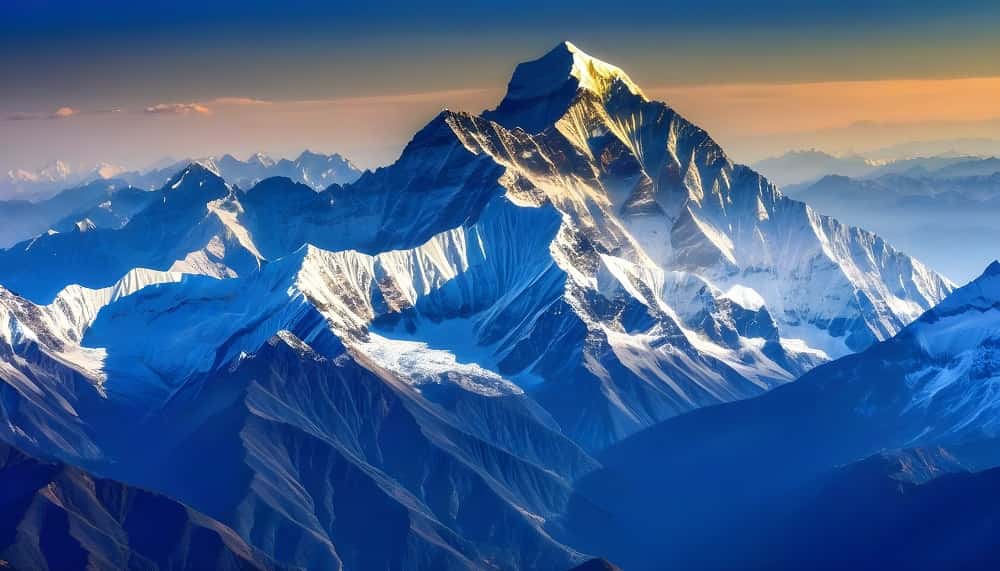Ever wondered about the extraordinary genesis of the world's loftiest mountain range, the Himalayas? Picture this, approximately 50 million years ago, our planet boasted a singular continent known as "Pangea." Across the eons, the relentless dance of tectonic plates orchestrated the fragmentation of "Pangea" into various landmasses. Enter India, a colossal landmass, embarking on a protracted northward journey over millions of years. A fateful rendezvous awaited as it collided with the Eurasian continent. The ensuing clash generated an immense force and pressure, upheaving a plethora of rock and soil debris. This dynamic collision sculpted the majestic Himalayan mountain range, extending over approximately 2,900 km, standing as a natural frontier between India and Nepal, and weaving connections with neighboring countries.
Introduction
The Himalayas, the awe-inspiring mountain range stretching across South Asia, have long captivated the imagination of geologists and adventurers alike. The formation of the Himalayan mountain range is a complex geological process that spans millions of years. It is primarily the result of the collision between the Indian and Eurasian tectonic plates. Here's a simplified explanation of the formation of the Himalayas:
Tectonic Plate Movement
- The lithosphere of Earth is segmented into numerous sizable fragments referred to as tectonic plates. Two of these plates, the Indian Plate and the Eurasian Plate, have been converging for a very long time.
Collision
- Around 50 million years ago during the Cenozoic era, the Indian Plate, moving northward, collided with the Eurasian Plate.
- The collision was slow but incredibly powerful. The Indian Plate, which was once an independent landmass, started to push against the Eurasian Plate.
Subduction and Crustal Thickening
- As the Indian Plate collided with the Eurasian Plate, the denser oceanic crust of the Indian Plate began to subduct beneath the Eurasian Plate.
- The immense pressure and heat generated by the subduction process caused the crust to melt and form magma.
Uplift and Fold Formation
- The molten rock (magma) that resulted from the subduction process started to rise through the Earth's crust.
- This molten material led to the uplift of the crust, creating the towering peaks of the Himalayan mountain range.
- The collision also caused extensive folding and faulting of the Earth's crust, contributing to the formation of the complex geological structures seen in the region.
Continued Uplift
- The Himalayas are still rising today due to the ongoing convergence of the Indian and Eurasian Plates. The rate of uplift is relatively slow, but it continues to shape the landscape.
The complex and dynamic process key stages:
In this exploration, we delve into the geological ballet that gave rise to these majestic peaks, uncovering the intricate processes that shaped one of the world's most iconic mountain ranges.
Tectonic Origins
The story of the Himalayas begins millions of years ago, in the crucible of tectonic forces. The collision between the Indian and Eurasian tectonic plates set the stage for the dramatic transformation that would unfold. As the Indian plate inexorably pushed northward, it met the resistant force of the Eurasian plate, initiating a colossal collision.
Tectonic Ballet
The collision between the plates was no abrupt clash; rather, it resembled a slow and intricate ballet of geological forces. The immense pressure generated by the converging plates led to the buckling and folding of the Earth's crust, creating vast mountain ranges. The Himalayas, born from this geological choreography, began to rise with breathtaking grandeur.
Erosion and Sedimentation
As the Himalayas ascended, the relentless forces of weathering and erosion sculpted their slopes. Rivers, like the iconic Ganges and Indus, carved deep valleys through the rising peaks, transporting eroded material downstream. The sedimentation of these materials not only shaped the landscape but also contributed to the ongoing growth of the Himalayan range.
Glacial Sculpting
In more recent geological epochs, glacial activity played a crucial role in shaping the distinctive features of the Himalayas. Massive glaciers carved out U-shaped valleys and polished the towering peaks, leaving behind the characteristic rugged terrain that we recognize today.
Ecological Impact
The formation of the Himalayas has had a profound impact on the region's ecology. The diverse range of elevations, from subtropical foothills to icy summits, has given rise to an incredible array of ecosystems, hosting unique flora and fauna. The mountains also act as a vital water source for millions, with rivers originating in their heights providing sustenance to the plains below.
Essentially, the Himalayas stand as an extraordinary exemplification of the ever-changing visage of the Earth's crust and the geological forces that have meticulously sculpted our planet across the vast expanse of millions of years. From the intricate dance of tectonic plates to the majestic peaks that now adorn the landscape, the formation of the Himalayas is a testament to the Earth's dynamic and ever-changing nature. Understanding this geological history not only enriches our appreciation for these towering wonders but also sheds light on the interconnected processes that shape our planet. The Himalayas stand as both a geological marvel and a reminder of the profound forces that continue to shape the surface of our Earth.













0 comments:
Post a Comment